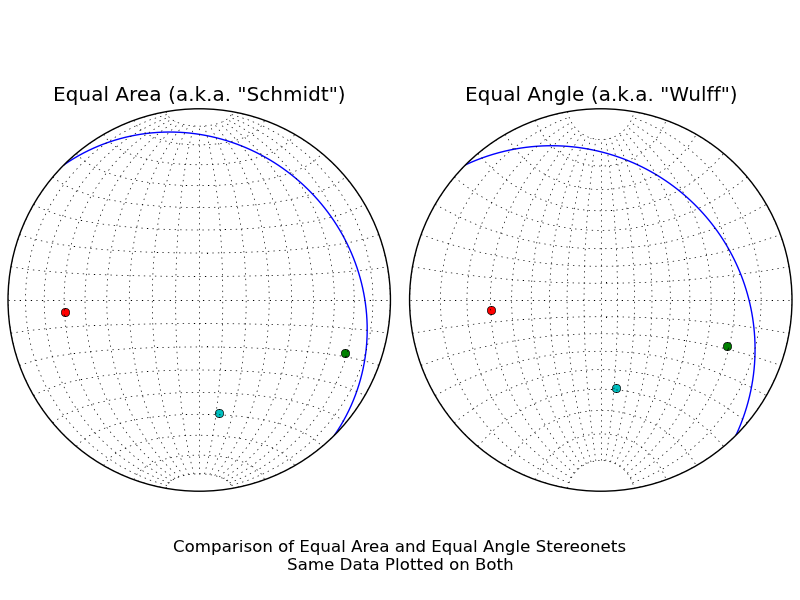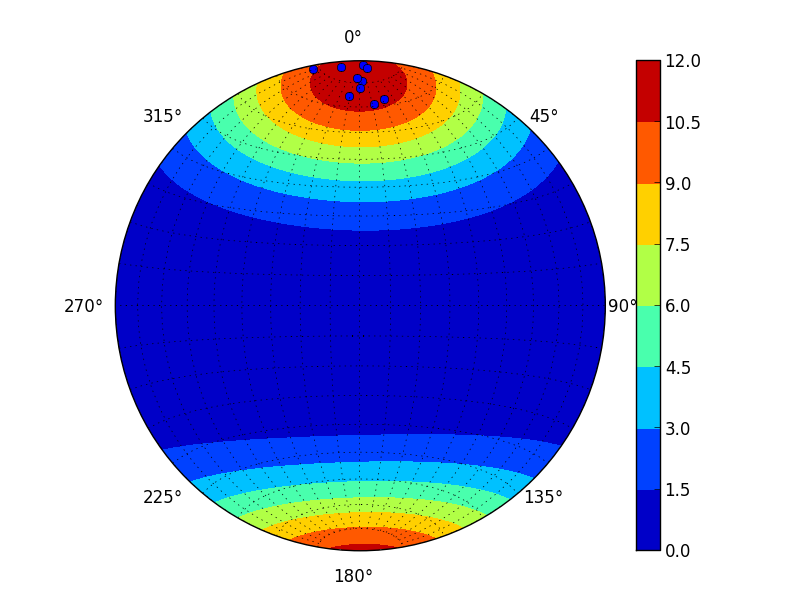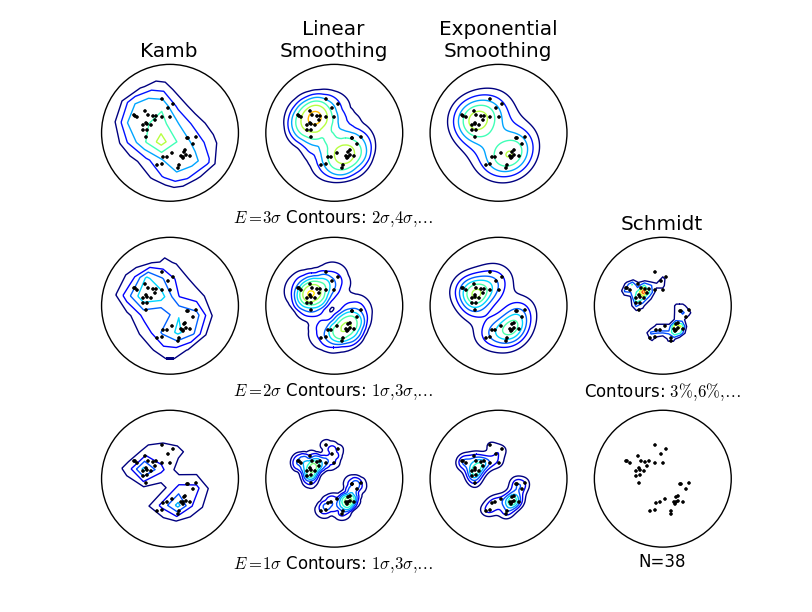mplstereonet provides lower-hemisphere equal-area and equal-angle stereonets
for matplotlib.

mplstereonet can be installed from PyPi using pip by:
pip install mplstereonet
Alternatively, you can download the source and install locally using (from the main directory of the repository):
python setup.py install
If you're planning on developing mplstereonet or would like to experiment
with making local changes, consider setting up a development installation so
that your changes are reflected when you import the package:
python setup.py develop
In most cases, you'll want to import mplstereonet and then make an axes
with projection="stereonet" (By default, this is an equal-area stereonet).
Alternately, you can use mplstereonet.subplots, which functions identically
to matplotlib.pyplot.subplots, but creates stereonet axes.
As an example:
import matplotlib.pyplot as plt import mplstereonet fig = plt.figure() ax = fig.add_subplot(111, projection='stereonet') strike, dip = 315, 30 ax.plane(strike, dip, 'g-', linewidth=2) ax.pole(strike, dip, 'g^', markersize=18) ax.rake(strike, dip, -25) ax.grid() plt.show()

Planes, lines, poles, and rakes can be plotted using axes methods (e.g.
ax.line(plunge, bearing) or ax.rake(strike, dip, rake_angle)).
All planar measurements are expected to follow the right-hand-rule to indicate dip direction. As an example, 315/30S would be 135/30 following the right-hand rule.
mplstereonet also provides a few different methods of producing contoured
orientation density diagrams.
The ax.density_contour and ax.density_contourf axes methods provide density
contour lines and filled density contours, respectively. "Raw" density grids
can be produced with the mplstereonet.density_grid function.
As a basic example:
import matplotlib.pyplot as plt import numpy as np import mplstereonet fig, ax = mplstereonet.subplots() strike, dip = 90, 80 num = 10 strikes = strike + 10 * np.random.randn(num) dips = dip + 10 * np.random.randn(num) cax = ax.density_contourf(strikes, dips, measurement='poles') ax.pole(strikes, dips) ax.grid(True) fig.colorbar(cax) plt.show()

By default, a modified Kamb method with exponential smoothing [Vollmer1995] is
used to estimate the orientation density distribution. Other methods (such as
the "traditional" Kamb [Kamb1956] and "Schmidt" (a.k.a. 1%) methods) are
available as well. The method and expected count (in standard deviations) can
be controlled by the method and sigma keyword arguments, respectively.

mplstereonet also includes a number of utilities to parse structural
measurements in either quadrant or azimuth form such that they follow the
right-hand-rule.
For an example, see parsing_example.py:
Parse quadrant azimuth measurements "N30E" --> 30.0 "E30N" --> 60.0 "W10S" --> 260.0 "N 10 W" --> 350.0 Parse quadrant strike/dip measurements. Note that the output follows the right-hand-rule. "215/10" --> Strike: 215.0, Dip: 10.0 "215/10E" --> Strike: 35.0, Dip: 10.0 "215/10NW" --> Strike: 215.0, Dip: 10.0 "N30E/45NW" --> Strike: 210.0, Dip: 45.0 "E10N 20 N" --> Strike: 260.0, Dip: 20.0 "W30N/46.7 S" --> Strike: 120.0, Dip: 46.7 Similarly, you can parse rake measurements that don't follow the RHR. "N30E/45NW 10NE" --> Strike: 210.0, Dip: 45.0, Rake: 170.0 "210 45 30N" --> Strike: 210.0, Dip: 45.0, Rake: 150.0 "N30E/45NW raking 10SW" --> Strike: 210.0, Dip: 45.0, Rake: 10.0
Additionally, you can find plane intersections and make other calculations by combining utility functions. See plane_intersection.py and parse_anglier_data.py for examples.
mplstereonet contains orientation data analysis methods, as well as
plotting functionality. For example, you can fit planes to girdles
or fit a pole to points,
identify different modes of conjugate sets of faults,
or calculate flattening values for Flinn plots.
Full documentation is available at https://mplstereonet.readthedocs.io/en/latest/mplstereonet.html
| [Kamb1956] | Kamb, 1959. Ice Petrofabric Observations from Blue Glacier, Washington, in Relation to Theory and Experiment. Journal of Geophysical Research, Vol. 64, No. 11, pp. 1891--1909. |
| [Vollmer1995] | Vollmer, 1995. C Program for Automatic Contouring of Spherical Orientation Data Using a Modified Kamb Method. Computers & Geosciences, Vol. 21, No. 1, pp. 31--49. |